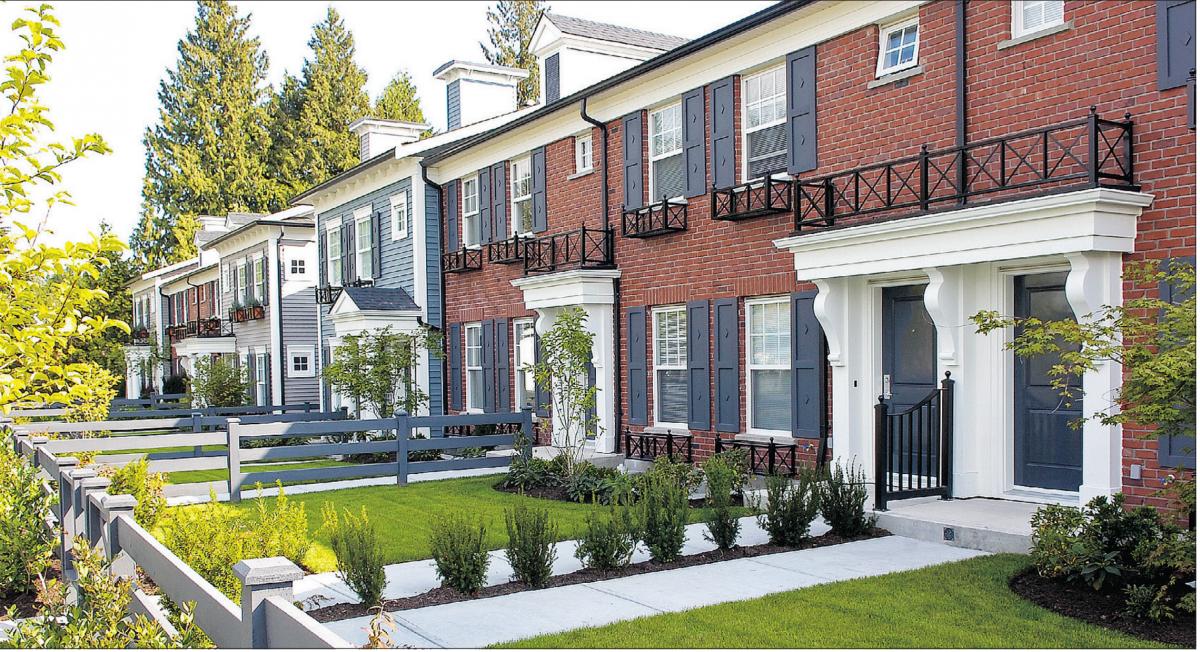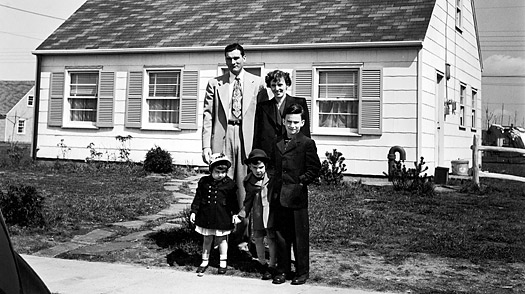
Both Peter Ladner in Business in Vancouver and columnist Daphne Bramham in the Vancouver Sun have featured comments made by Larry Beasley, the former Co-Director of Planning at the City of Vancouver. Larry is a thoughtful and analytical planner whose mindfulness shaped the downtown peninsula into a world-class paradigm. I’d also credit him along with his engaged and artful planning staff in refining the concept of Vancouverism-the mixed use form, space and structure that is admired by many.
It’s no secret that even though there were over 27,000 Metro Vancouver unit building starts in 2016 (which is 57 per cent over the 10 year average) that not enough people are getting housed. As Peter Ladner notes “With the average household at 2.6 people, that’s enough supply for almost 70,000 new people, but population growth last year was 30,700 people. We’re building more than enough to accommodate local population growth, but not investment demand.”
In a global economy where housing is being bought for an investment instead of as necessary accommodation, there is not enough housing to go around. The foreign buyer’s tax and increasing property taxes could add to the supply, but more is needed.
Larry Beasley “has concluded that we need to build out a “third sector” to deal with middle-class affordability: new supply that’s secured for locals and for certain groups of consumers.” Larry is thinking of a “semi-market” housing targeted to middle-class income earners. One example would be reviving self-owned co-ops, where some units subsidize other units. Or we could follow Melbourne’s requirement for new big job centres to include employee housing. Or ramp up inclusionary zoning to require new high-end condo developments to include some fixed-price units. Madrid and Whistler are two places that have created non-profit home ownership: homes sold to local workers to build equity, but they can be sold only at a pre-determined rate, with little or no profit.”
Larry Beasley describes this third sector of housing as “semi-market, and could include co-housing which includes some shared living space. Such a third housing sector would require collaboration between governments, developers, banks and non-profits. Most notably, such housing could include “as much as 30% of the housing market, securing the kind of affordability that would guarantee the diversity of our region for years to come.”














As Canada’s #1 advocate of life lease housing I completely agree that the non-profit sector could play a much bigger role in meeting emerging housing needs, especially among the growing 55+ group. Create satisfying and affordable options for downsizers, free up underused dwelling units and engage the energy, creativity, commitment and resources of the non-profit sector – now there’s a win win win if ever I heard one.
Why not just bar foreign buyers? The federal government has the power.
The 15% tax on foreign buyers cut the sales in half in some areas, but the price did not follow in lock step and decreased only to the low side of unaffordable.
Banning “foreign” buyers would have to include a Great Wall to block all the refugees from Alberta too. Or you could propose filling in English Bay to create more land.
We should not bar them, just monetize it more. Many laws exist, but are poorly enforced. We could track every purchase to a SIN number, but we do not. You are supposed to pay income taxes on gains but many chose not to report it. We could also charge far more property taxes for non-income tax paying folks. Foreigners know that and act appropriately as BC is still quite a bargain to buy and especially to own. Cheap here compared to other markets.
BC at least has a land transfer tax that could be a lot higher, say 1% per $1M. We could also reduce building code complexities. More on this here https://www.prestprop.com/2016/08/19/creating-affordable-housing-supply-modifying-building-code/ We could also create more housing on under-used ALR. ALR needs a thorough review as about 20% is not suitable for farming and much is underutilized. We could create more land in the ocean flats. We could densify along certain throughfares.
I was interested to see that Larry Beasley has an upcoming EdX course on EcoDesign: https://www.edx.org/course/ecodesign-cities-suburbs-ubcx-ecodesignx
It’s not everyone’s cuppa, but cohousing and private co-ops do provide a reasonable alternative to high-priced housing. Note that none of the ideas promoted by Beasley include detached homes on large lots.
This cohousing project did crack the RS zoning stranglehold on our otherwise abundant land supply by allowing 31 multifamily units to be built from a rezoned trio of large lots.
http://cohousing.ca/places/canada/british-columbia/vancouver/bc_cohousing/vancouver-cohousing/
There is also great potential for public rental housing, but that would have to dump the failures of the 60s social housing block model. Mixed use with perhaps 50% public rental apartments and townhouses with good management could also allow more people with average and lower incomes to live in the Big Smoke.
Taking another look, the original lots were monsters — over 9,000 ft2 and 220 feet long. Any objection to up-zoning them would have been completely unreasonable.
There’s a book titled: ‘Modernist Estates’, that profiles some of the best examplars of multi-unit buildings and interviews the architects that designed them and the people who lived in them – sometimes one and the same. Places people enjoy. The rowhouses pictured above would not be included.
Vitruvius posited three tenets of architecture: firmitas, utilitas, venustas – the structure above doesn’t measure up. It’s better than a trailer park, but not much. Especially hate the excrescences on the facade. The pretentious porticos with big bold plastic styrofoam brackets are repellent, as are the glued-on shutters. It’s reminiscent of trailers with “cathedral ceilings”. You just know that corners were cut, OSB, MDF, and particle board were materials of choice, and the walls will permit every sigh to penetrate. There is no permanence here. But there will be gas fireplaces, and maybe granite counters – the designs of inanity.
I thought the same thing, rather cartoony. And they are probably strata tilted too, adding another encumbrance in my view along with a concern more for developer / builder’s profits than the privacy of the owners.
The rowhouses of London offer 3 m tall walls in the tiny backyards that encircle a private courtyard or back yard. Being built in the 1800s and early 1900s also means fee simple ownership and two independent vertical load-bearing solid brick walls between them to offer excellent sound proofing. Today many are carved up into rental suites, or even offered for sale.
Author
Reblogged this on Sandy James Planner.
Ah yes…. now that we’re running out of buyers and the bubble is reaching the top, another clever way to get government (and others) to subsidize new buyers to get into the market and ensure prices don’t tumble.
The assumption is that everyone HAS to buy, that everyone HAS to get in before being priced out. This is what keeps bubbles going a long, long time. Then when it all busts the tax payer and those that were sucked into buying will be left with a lot of hurt.
The answer isn’t to encourage buying, therefore encouraging prices rises. The answer is to discourage buying, encouraging price drops.
But, the 65% of Metro households that own and/or have invested in the bubble, don’t want to see that happen. *deleted as per editorial policy*
If there was a “bubble” don’t you think it would have burst in the second deepest economic decline in a century in 2008? Prices are high for various reasons, and not just because of speculation. The land value is real, not fake. This is a fact of life people like you need to get used to, and hopefully learn to contribute meaningfully to working out how to use the expensive land efficaciously.
It started to burst in Canada back in 2008-9, but central bankers started conjuring vast amounts of money, doubling the world’s money supply – unprecedented in history. That causes asset inflation. It’s not that the value of assets like real estate have increased in value – it’s that the value of money has decreased.
This was not intended to be a permanent solution, and it has gone on for longer than expected, so it’s understandable that many have gotten used to this as the new normal. But, if and when the central bankers start normalizing interest rates and contracting the money supply, there could be a lot of hurt.
Land value is manipulated by government in many ways and is as real as they make it. In addition to artificially low interest rates, help-to-buy schemes like the recent BC government teaser loans and CMHC subsidization of mortgages artificially subsidize home ownership propping up prices.
My fear is that this “third housing sector” plan, though well intentioned, may end up being another help-to-buy scheme where tax-payer money props up real estate prices by enticing more to buy. With world-wide monetary policy starting to pivot, as we can see by the US Fed’s recent moves, it’s not unreasonable concern.
Some of this sounds compelling. But if the value of money has decreased by the reciprocal amount that housing prices (in certain markets) have exploded then everything would have gone up in price by similar amounts. I see no evidence of this.
The interest rates held between 3% and 6% for 11 years, and dropped as a by-product of the quantitative easing schemes after the 2008 meltdown. The housing (more accurately the land) prices rose several hundred percentage points in that period, meaning there was an incongruent relationship between rates and prices for over a decade.
So far we’ve seen prices rise independently of interest rates, while speculation became a hot topic, and while the land supply fro single family homes was artificially locked up through the zoning of RS districts. Two out of three of these elements have been dealt with through changing the interest rate and imposing a foreign buyer’s tax, and the prices are still relatively high.
Which leaves supply.
The upzoning of land to apartment districts is quite different, and you’ll have to look at the history of median housing prices to see that there is still a lot of affordability there away from waterfront and luxury units. Nobody in their right mind should use the higher price for detached homes on large lots on the west side as the standard bearer for all housing.
The geometry lesson presented by Mountain Math is very clear: approximately 30% of housing sits on 80% of residential land in the city. Ergo a land shortage and a major contributor to the affordability crisis. The detached home on big, open lots is now obsolete and developing single-family attached housing on small parcels is long overdue.
Tax empty homes.
Make AIRBNB illegal.
Not rocket science. 🙂
ABB is already prohibited via by-laws, both civic and strata. There seems no political will to enforce.
As for taxing empty homes, what say you to those who work in several locations, and keep homes in each? How long can a home be “empty” before it is taxed? Who would be tasked w/ the burden of proof?